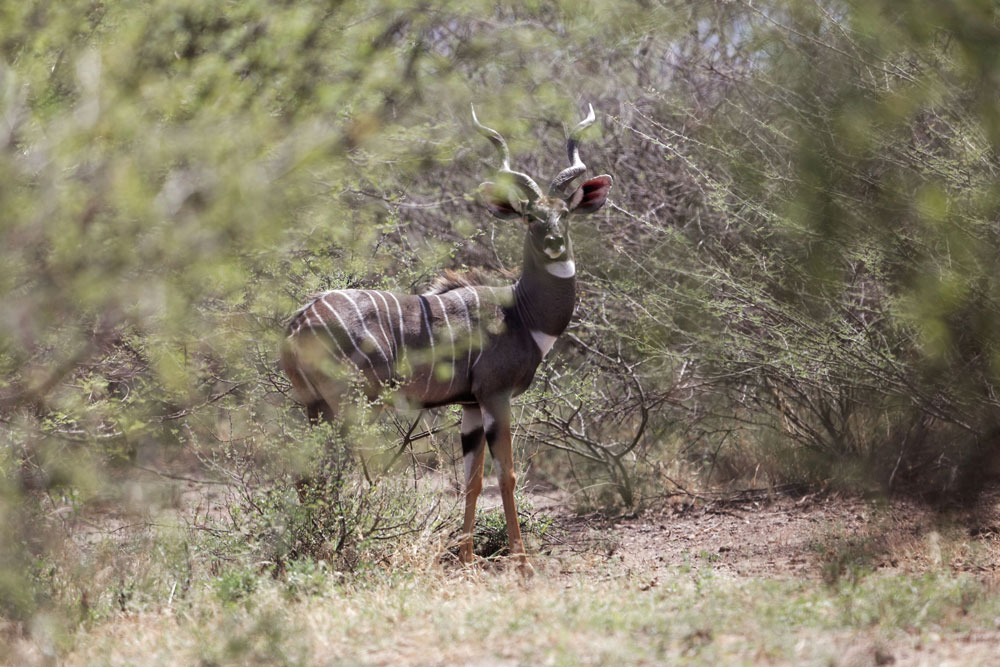The lesser kudu (Tragelaphus imberbis) is a slender spiral‑horned antelope of eastern Africa. Males possess elegant corkscrew horns and grey‑brown coats marked with 11–14 white stripes. Shy and elusive, lesser kudu inhabit dense thornbush and acacia woodlands from Ethiopia and Somalia to Tanzania and Uganda. Their secretive behaviour and striking appearance make them a coveted prize for hunters.

In Tanzania, lesser kudu hunts are conducted during the general safari season from July 1 to December 31. Hunters typically need a 21‑day licence and employ spot‑and‑stalk tactics in semi‑arid bushveld. Guides look for fresh tracks and glass from elevated points before stalking through dense bush where these shy antelope hide. Because lesser kudu are most active at dawn and dusk and extremely alert, shots must be taken quickly when an opportunity arises.
Tanzania manages lesser kudu through a quota‑based system to ensure sustainable populations. Hunting contributes to conservation by funding anti‑poaching and supporting local communities; all hunts must be supervised by registered professional hunters and adhere to government‑issued licences and quotas. Elsewhere in their range, populations are monitored, and some countries rely more on photographic tourism; quotas and permit requirements vary. By limiting offtake and directing fees toward habitat protection, hunting helps maintain the species’ long‑term viability.
Lesser kudu are primarily crepuscular and nocturnal; they seek shelter shortly after sunrise and may leap up to 2 m when startled. Social groups usually consist of two to five individuals, with old bulls often solitary. Unlike greater kudu, lesser kudu males lack a throat mane and have thinner dewlaps. While they seldom drink, they browse on leaves, fruits and pods and range across semi‑arid woodland—factors hunters must consider when planning stalks.
Lesser Kudu can be found in the following location:
Lesser Kudu has the following variations:
- (Varieties to be confirmed)
Start Your Adventure



